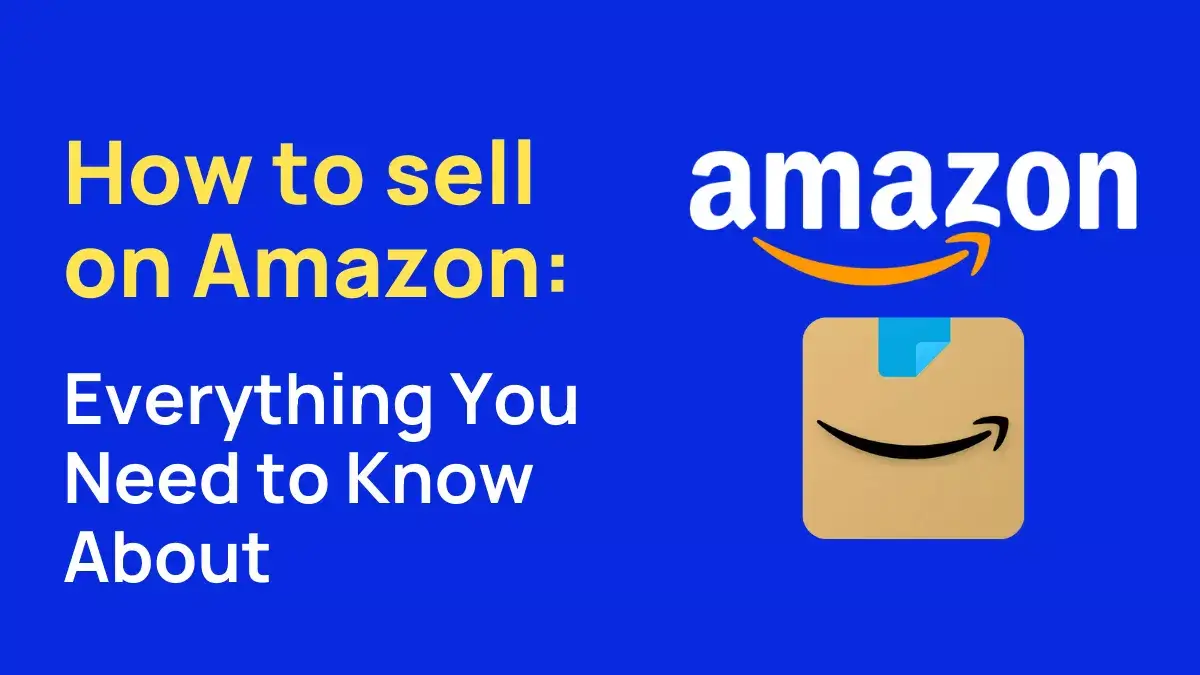Reasons to choose Amazon Global Selling from India:
- Expands Your Reach: Amazon Global Selling allows Indian sellers to tap into international markets, expanding their business beyond domestic borders. This provides the opportunity to access new customers and grow their brand on a global scale.
- Easy Delivery: With Amazon FBA (Fulfillment by Amazon), sellers can ensure prompt delivery to customers worldwide. FBA handles storage, packing, shipping, and even returns, making logistics easier and ensuring a seamless experience for both sellers and buyers.
- Builds Trust: Being associated with a globally recognized brand like Amazon enhances trust and credibility for Indian sellers. Customers feel confident buying from trusted platforms, helping sellers attract new customers and increase sales.
- Minimal Maintenance Fees: The costs associated with joining Amazon Global Selling are relatively low compared to the benefits. Sellers can avoid many expenses related to international sales, such as those for exporting and marketing, while still reaching a wider audience.
These advantages make Amazon Global Selling a strategic choice for Indian sellers looking to grow their business internationally.
Five-Modeling Process To Starting an Amazon Business and Achieving Success:
Model 1. Deciding on Your Amazon Business Model
There are several business models you can choose from as a new seller on Amazon. Your choice should align with your goals, resources, and preferences:
- Retail or Online Arbitrage: This model involves buying discounted products from online or physical stores and reselling them on Amazon for a profit. You can use the Amazon seller app to scan products and assess potential profitability. Budget: $100–500 in startup costs.
- Dropshipping: In this model, a third-party supplier manages your inventory, shipments, and storage. You only need to focus on making sales. Many dropshipping suppliers offer a free start, but monthly costs may vary depending on your supplier. Budget: $0 to start.
- Wholesale: Wholesale involves buying products in bulk from known brands and reselling them at a higher price. It requires a larger upfront investment and competition with other sellers. Budget: $1,000 or more.
- Private Label Products: Private label sellers work with third-party manufacturers to produce products with their own brand names. This model offers the opportunity to build a unique brand and potentially secure trademarks. Budget: $3,000 or more.
After selecting a business model, the next step is finding the right products to sell.
Model 2. Product Research
Research is crucial when starting your own Amazon business. With over 25,000 product niches available, you need to focus on identifying the most promising products for your chosen business model.
- Get Niche Ideas Using the AMZScout Product Database: This tool simplifies the product research process. Follow these steps:
- Sign up: Start your free trial on the AMZScout Product Database.
- Set your product criteria: Use filters to specify product standards such as price range ($15–100), in-demand items (at least 300 sales per month), small and lightweight items (to minimize shipping costs), low competition (for private label products), and a relatively low number of sellers (for dropshipping, arbitrage, or wholesale models).
- Get results: Click “Find Products” to generate a list of potential products.
- Choose your products: Select products based on your interests and criteria.
The Product Database offers a list of potential items to sell and can be used in conjunction with other tools to assess profitability and evaluate potential products.
To find the profitability of products and niches using the AMZScout PRO Extension, follow these steps:
A. Start Your AMZScout Free Trial
- Sign up with your email address to begin your free trial of AMZScout PRO Extension.
- Install the extension.
B. Open AMZScout PRO Extension
- Visit Amazon.com and conduct a search based on what you discovered in the Product Database.
- Click the AMZScout icon located in the top-right corner of your browser to open the extension.
- If you haven’t already, create a free account when prompted.
C. Examine Product/Niche Profitability
- The top of the screen will display essential product information, such as net margin, estimated sales, and revenue, in a table format.
- This information helps you assess whether the product or niche is worth selling.
D. Determine Niche Demand
- Click on “Niche Score” to view a market analysis of the niche you are considering.
- This feature provides a summary of demand and competition levels in that niche.
E. Examine Demand
- Use the “Niche History” feature to review historical data and understand how demand changes over time, including seasonal fluctuations.
- This insight can help you decide whether the niche is viable in the long run.
F. Analyze Product Potential
- For individual items, you can find the “Product Score” next to each product.
- The Product Score assesses the demand, competition, profitability, and other important factors for each item.
Using both the Product and Niche Scores, you will be able to gather comprehensive data to help you choose the most profitable products and niches to sell on Amazon. This data-driven approach can enhance your decision-making and increase your chances of success.
After completing these steps, you can move on to sourcing products and setting up your Amazon business.
Model 3. Finding Suppliers and Sourcing Products
After creating a list of products to sell, the next step is to find suppliers for those products. The way you find suppliers depends on your chosen business model. Here are some strategies for finding suppliers and sourcing products:
Wholesalers
- Contact Known Distributors: Reach out to wholesale distributors in your chosen industry. Building a relationship with them is key to negotiating favorable terms.
- Prepare a Business Plan: Wholesalers often prefer to work with established sellers, so presenting a solid business plan can improve your chances of success.
Dropshipping
- Search for Suppliers Online: Conduct a Google search for reputable dropshipping suppliers, such as Modalyst. Research their reputation and customer reviews before partnering with them.
- Evaluate Smaller Suppliers: If using smaller providers, take extra care to vet their services and quality through online reviews and customer feedback.
Online and Retail Arbitrage
- No Direct Suppliers Required: Online and retail arbitrage often involve purchasing products from existing retail outlets, whether online stores or local brick-and-mortar shops.
- Explore Online Marketplaces: Online arbitrage specialists may source products from Alibaba, while retail arbitrage specialists can find supplies at local sales events.
Private Label Sellers
- Local or Online Manufacturers: Private label sellers have two main options: working with a local manufacturer or sourcing products from online suppliers.
- Use Alibaba: Alibaba is a major platform for sourcing private label products and offers a wide variety of manufacturers worldwide.
Finding Suppliers on Alibaba
- Use AMZScout PRO Extension: Search for products using the AMZScout PRO Extension and click the “Find on Alibaba” button.
- Contact Suppliers: Once on Alibaba.com, click “Contact Supplier” to start discussions about purchasing their products.
What to Do After Finding Potential Suppliers
- Negotiate Rates: Discuss terms with multiple suppliers to secure the best rates and understand manufacturing costs.
- Research Quality: Conduct research on materials and the manufacturing process to ensure high-quality products.
- Order Samples: Request samples to assess the quality, durability, and suitability of the product for your market.
- Verify Shipping: Test how well the sample survives shipping and withstands regular use.
Shipping Products to an Amazon Fulfillment Center (FBA Sellers)
- Send Products to an Amazon Fulfillment Center: For FBA sellers, the next step is to ship products to a nearby fulfillment center, where Amazon manages the storage, handling, and shipping of your goods.
- Benefits of FBA: FBA sellers often benefit from faster shipping, higher sales, and greater visibility on Amazon. There is an additional cost for FBA fees.
Alternatively, if you choose to manage fulfillment yourself (FBM), you’ll handle storage, fulfillment, and staffing. This approach can require renting storage facilities or a warehouse and hiring additional staff.
Working with Knowledgeable Suppliers
- Look for Suppliers Familiar with Amazon: Seek suppliers who understand Amazon’s fulfillment center requirements to avoid shipping delays and returned goods due to non-compliance.
- Ensure Clear Communication: Open communication with your suppliers will help establish a smooth working relationship and avoid potential issues.
By following these steps, you can effectively source products and establish reliable partnerships with suppliers to support your Amazon business.
Model 4. Creating an Amazon Seller Account
Creating an Amazon seller account is a key step in establishing your Amazon business. While it may be tempting to create your account early on, it’s important to have a clear idea of the products you plan to sell beforehand. Here’s how to create an Amazon seller account and choose the appropriate selling plan:
A. Sign Up for an Amazon Account
- Use an Existing Account: If you already have an Amazon shopping account, you can use it to sign up as a seller.
- Create a New Account: Alternatively, you can create a new account specifically for your seller profile.
B. Provide Required Information
- Personal Details: Fill out basic information about yourself, such as your name and contact details.
- Business Entity: While Amazon doesn’t require you to have a business entity to become a seller, you can choose to connect your seller account to a business if you prefer.
C. Submit Necessary Documents
- Identification: Provide a current photo ID (e.g., passport or driver’s license).
- Payment Information: Connect a payment card for potential fees and a bank account to receive payments from Amazon.
- Bank Statement: Amazon may request a copy of your most recent bank statement.
D. Complete Verification Steps
- Video Interview: Amazon may require you to participate in a video interview, during which you’ll need to present your photo ID and possibly your bank statement.
- Address Verification: Amazon will send you a postcard with a verification code to confirm your physical address. Enter the code in your seller account to verify your account.
E. Choose a Selling Plan
- Individual Plan: This plan has no monthly fee, but you’ll pay a $0.99 fee for each unit sold. It’s suitable for casual or occasional sellers and offers limited access to Amazon’s advertising tools.
- Professional Plan: This plan costs $39.99 per month but does not charge the $0.99 per unit fee. It includes advanced selling tools and access to programs like Amazon Handmade and Launchpad.
Tips for Choosing a Plan:
- Consider your sales volume: If you plan to sell more than 40 products per month, the professional plan is more cost-effective.
- Test the professional plan: If you’re unsure, try the professional plan for a month to see if you benefit from the extra tools.
F. Finalize Your Account
- Once you’ve chosen your plan and completed the verification steps, you can finalize your account and start listing your products for sale.
By completing these steps, you can create an Amazon seller account and begin your journey as a seller on the platform. Remember to choose the plan that best suits your business goals and selling volume.
When selling on Amazon USA from India using Amazon FBA, you need to comply with certain documentation requirements. Here is a list of documents necessary for exporting products to the USA:
- Authorized Dealer (AD) Code Letter:
- Banks dealing in foreign currency are assigned an Authorized Dealer (AD) code by the Reserve Bank of India (RBI).
- Exporters should obtain an AD code letter from the bank where they maintain their current account.
- The AD code letter must be submitted at the customs port from which the goods will be exported.
- This allows banks and customs agencies to track the export transactions.
- Import Export Code (IEC):
- An Import Export Code (IEC) is a unique 10-digit identification number provided by the Directorate General of Foreign Trade (DGFT).
- Any business involved in importing or exporting products to and from another country must have an IEC.
- This code is mandatory for participating in international trade.
- GST Letter of Undertaking (LUT):
- A Letter of Undertaking (LUT) allows exporters to export goods and services without paying Integrated Goods and Services Tax (IGST).
- Exporters can provide the LUT to their logistics partner once per financial year to obtain the shipping bill.
- Importer on Record (IOR):
- An Importer on Record (IOR) is responsible for managing the filing of taxes, customs, and other required paperwork for imports.
- The IOR ensures that imported goods comply with local regulations.
- An IOR may not be necessary for shipments under $2,500 in value that qualify for informal entry, unless the shipment includes items classified under regulated categories.
Model 5. Creating and Optimizing Product Listings
Creating your first product listing on Amazon is an exciting milestone in your business journey. It’s important to optimize your listing properly to attract customers and improve your sales. Optimization involves creating high-quality content, including product photos and descriptions, and effectively using keywords. Here’s how you can optimize your listing and create your first product listing using AMZScout tools:
1. Optimize Your Listing
- High-Quality Product Photos: Include multiple clear and professional product images from different angles.
- Compelling Titles and Descriptions: Write clear, concise, and engaging titles and descriptions that highlight your product’s features and benefits.
- Correct Grammar and Spelling: Ensure your content is free of errors to maintain credibility and professionalism.
- Keyword Research and Implementation: Use relevant keywords to improve your listing’s visibility and reach your target customers.
2. Conduct Keyword Research
- Find the ASIN (Amazon Standard Identification Number): Locate the ASIN on your competitor’s product page.
- Use Reverse ASIN Lookup: Enter the ASIN in the AMZScout Reverse ASIN Lookup Tool search bar.
- Set Keyword Parameters: Specify the desired keyword length and search volume for your results.
- View Keyword Results: Review the keyword suggestions, focusing on long-tail keywords for better specificity and relevance.
3. Create an Ideal Listing with AMZScout Listing Builder
- Step 1: Create Keyword Groups
- Open AMZScout Listing Builder: Navigate to the “Keyword Groups” tab and click “Create a Group.”
- Add Keywords: Manually enter keywords or use similar product ASINs to generate a list of relevant keywords.
- Step 2: Compose and Review Your Listing
- Navigate to the “Listings” Tab: Click “Create Listing.”
- Enter Listing Data: Fill in the product title, five bullet points, description, and backend keywords.
- Strategically Intersperse Keywords: Use the keywords you selected in your listing sections.
- Review Your Listing: Use the “Your Match with a Perfect Listing” option to analyze your text for potential improvements.
- Save and Download: Once your listing is complete, save it and download in XLS format for record-keeping.
Additional Tips:
- Use Long-Tail Keywords: Long-tail keywords are more specific and have lower competition, increasing the chances of ranking higher.
- Maintain Keyword Relevance: Choose keywords that closely match your product to attract the right customers.
- Monitor and Adjust: Continuously monitor your listing’s performance and make adjustments based on feedback and sales data.
By following these steps, you can create an optimized product listing on Amazon that effectively attracts customers and increases your sales potential. Take your time to craft a compelling listing and utilize AMZScout tools to gain insights into your competitors’ keywords and product listings
Final Thoughts
Starting an Amazon business can be a rewarding venture, offering the potential for solid profits and access to a large customer base. Here are some compelling reasons why it’s worth considering starting an Amazon business:
1. Potential for Solid Profits
- High Earning Potential: If you identify the right product and niche, you can generate substantial income by selling on Amazon.
- Diverse Revenue Streams: Amazon offers various business models, from FBA to dropshipping, allowing you to choose the one that best suits your goals and resources.
2. Access to a Vast Customer Base
- Massive Market: Amazon has over 150 million Prime accounts, providing sellers with access to a vast audience of potential buyers.
- Prime Delivery Benefits: FBA sellers can benefit from Amazon Prime’s fast delivery services, making their products more attractive to Prime members.
3. No Marketing Experience Required
- Built-In Traffic: Amazon attracts substantial traffic, saving you the effort and cost of marketing your products from scratch.
- Ease of Getting Started: The platform is user-friendly, and you can start selling without prior marketing expertise.
4. Opportunities for Automation
- Streamlined Operations: Amazon offers automated tools to manage inventory, pricing, bookkeeping, and more, allowing you to focus on expanding your business.
- Software Support: Various tools and software can help optimize your listings and automate tasks, freeing up time for strategic planning.
Starting an Amazon business can be a lucrative opportunity, offering potential for solid profits and access to a vast market. Whether you’re a beginner or an experienced entrepreneur, Amazon provides various tools and resources to support your growth. With the right mindset, a focus on optimization, and the use of helpful tools like AMZScout, you can set yourself up for success on the Amazon platform.
I am Komal Hatwaani, aims to provide readers with informative and engaging content that covers everything from technology and business to entertainment and lifestyle. This website dedicated to delivering high-quality content that informs, entertains, and inspires our readers.
Join us on our journey as we continue to explore the ever-evolving landscape of news and information, providing you with valuable insights and perspectives that enrich your digital experience.













